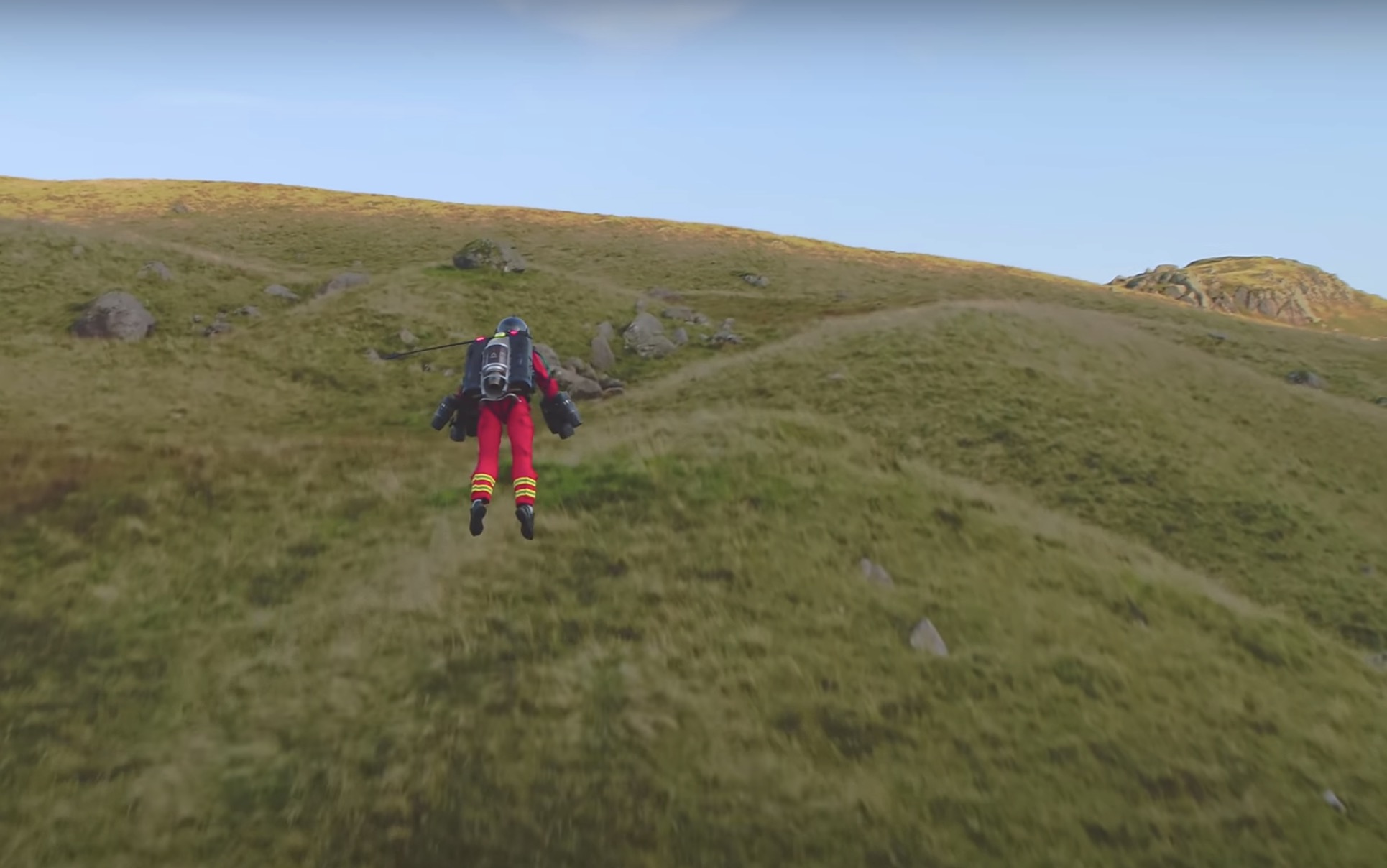When someone is seriously injured in the wilderness, high in the mountains and time is of the essence, sending out search and rescue teams on foot is often the only way to get help to them. Aside from sending in a helicopter (which is very expensive and often reserved for life-threatening evacuations), an injured outdoorsman has to wait until mountain paramedics or wilderness responders can hike out to them. It often takes hours or even days, depending on how far the responders need to travel, and how easy the terrain is to manage.
Or at least, it used to. But this is 2020 — the future — and now we’ve got technology that would make Tony Stark himself green with envy. Technology that could very well change outdoor medical emergency response forever.
As long as it’s proven to be relatively safe to use.
Introducing Gravity’s new lightweight mountain medical jetpack system — a self-contained “Jet Suit” that was recently tested out in the UK for paramedic mountain response. And it looks freaking awesome. In no time at all, a paramedic dispatched to mountainous or otherwise difficult-to-traverse terrain can suit up, blast off and fly over to the injured person to start administering care in almost no time at all.
It’s an incredible leap in response-medicine-tech, and one that will undoubtedly save lives once it’s instituted. This “Jet Suit” essentially turns your everyday, average paramedic into Ironman — literally a flying superhero propelled by rocket engines, out to rescue stranded or injured people.
The area where this new system was tested is known as the Lake District, where paramedics are often called out to help patients who have been injured while out hiking the grassy hills. They were responding to dozens of calls a month in this area, and Andy Mawson, the director of operations and paramedic at Greater North air ambulance service identified it as apot where jetpack paramedics might be really useful.
“We could see the need. What we didn’t know for sure is how this would work in practice,” Mawson said in an interview with the Guardian. “Well, we’ve seen it now and it is, quite honestly, awesome.”
It worked, in other words — and it worked really well. There is clearly a lot of potential for a system like this to transform wilderness medical response not just around the UK’s Lake District, but around the world.
“From personal experience I know that carrying medical kit up the side of a mountain in the lakes is so difficult,” said Mawson. “But with a rapid response car and this jet suit we are going to see a sea change in the way we deliver remote medicine.”
Right now one of these jetpack suits is running at about £340,000 Euros ($398,461) a pop. They use two micro jet engines (not unlike an aircraft’s) on each arm and another one on the back to create lift and offer control. Their top speed is 80 miles per hour and their to0p altitude is 12,000 feet (though, paramedics will stay much, much closer to the ground than that).
A few last minute modifications are being made by the suit’s creators before it is adopted by paramedics — who anticipate they’ll start using these things by the summer of 2021.
So, in the future, should you be injured in the wilderness and need help, the paramedics who come to the rescue might come flying out of the sky. What a sight that will be to behold.



Leave a Reply
You must be logged in to post a comment.